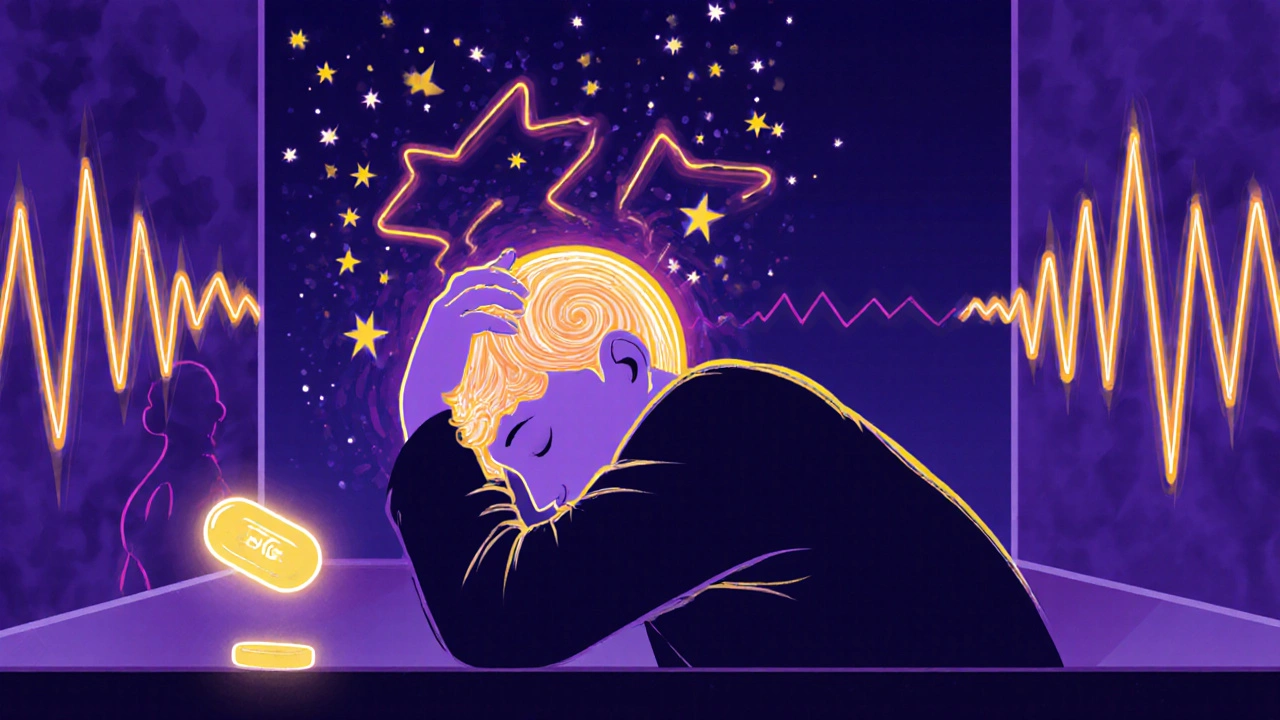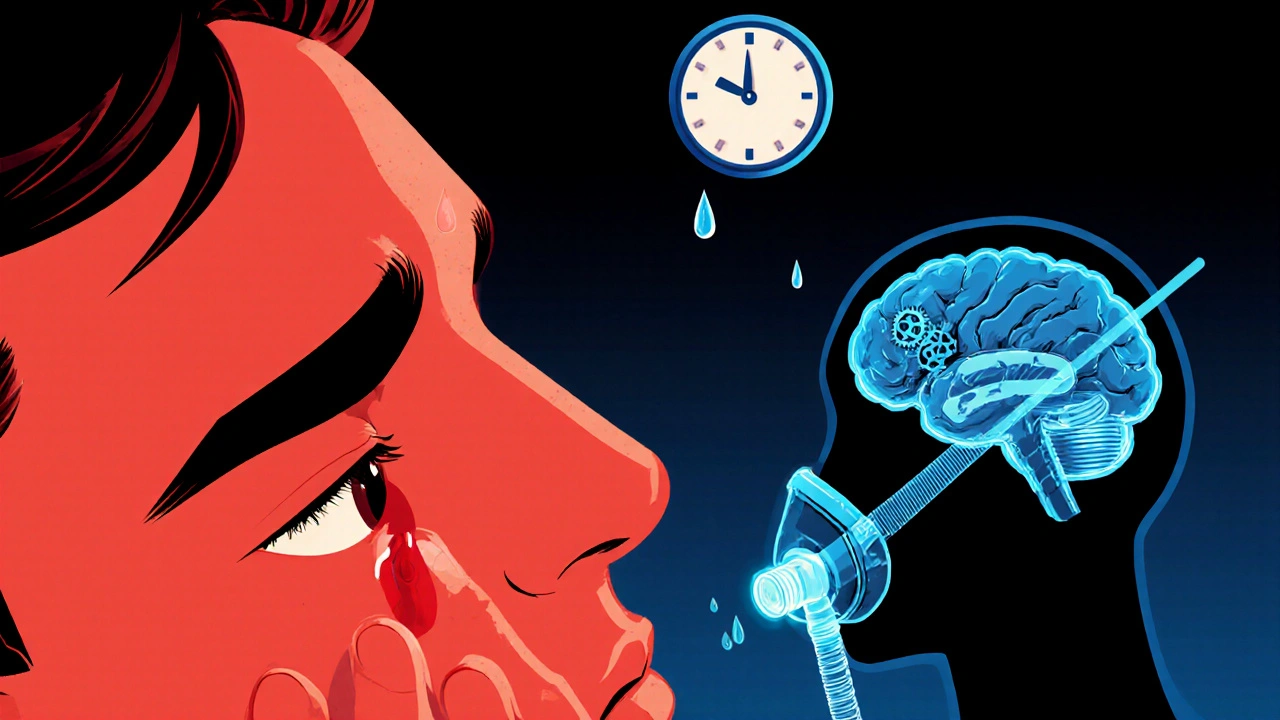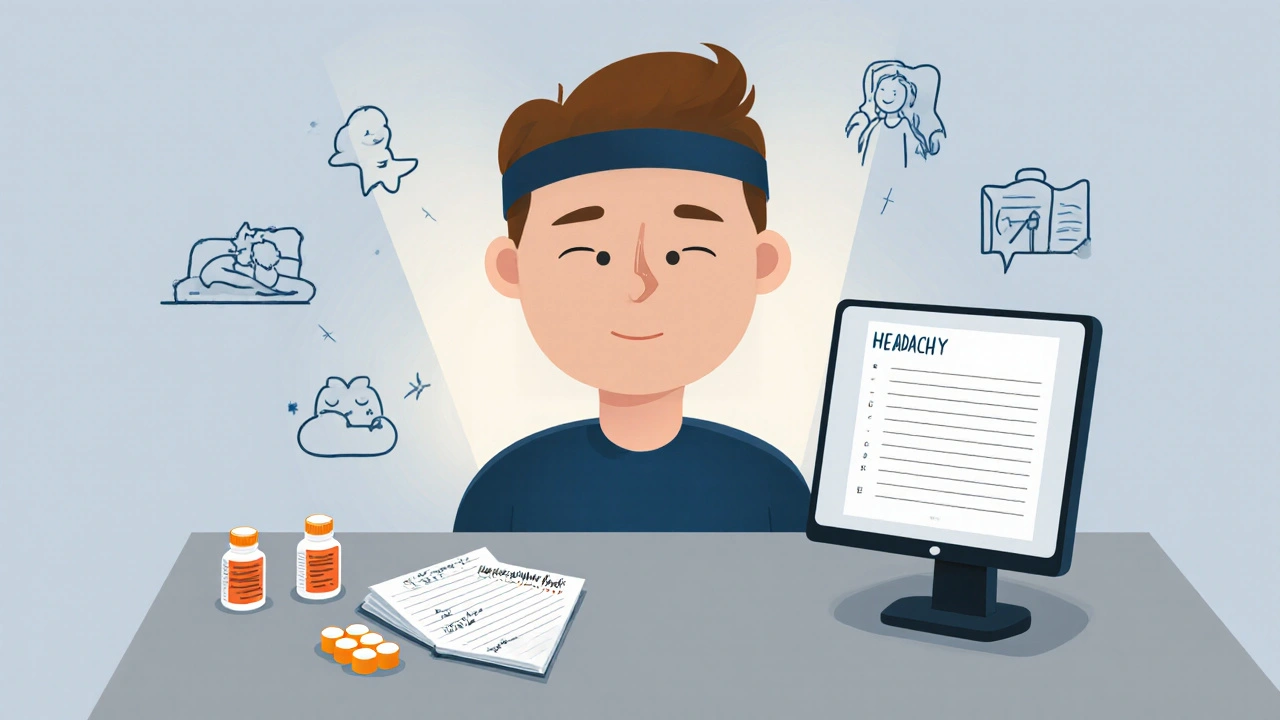Not all headaches are the same. If you’ve ever been told, "It’s just a tension headache," but felt like your skull was splitting open, you know that’s not true. The truth is, three main types of headaches - tension, migraine, and cluster - are often confused, misdiagnosed, and mistreated. Getting the right diagnosis isn’t just about naming the pain. It’s about knowing how to stop it.
Tension-Type Headaches: The Most Common, But Often Misunderstood
Tension-type headaches affect nearly half the world’s population. That’s about 42% of people, according to the Global Burden of Disease Study. They’re not "just stress" - they’re a real neurological condition, first properly described in the 1940s. The pain feels like a tight band around your head, or like someone’s squeezing your temples. It’s usually on both sides, mild to moderate, and doesn’t throb. You can still work, cook, or talk through it - but it’s there, all day, every day.
Episodic tension headaches last from 30 minutes to 7 days. Chronic ones? They hit 15 or more days a month for three months straight. Women are 1.4 times more likely to get them than men. Unlike migraines, physical activity doesn’t make it worse. You won’t throw up. You won’t need to hide in a dark room. And you won’t see flashing lights before it starts.
Most people treat these with over-the-counter painkillers like ibuprofen or acetaminophen. About 70% of cases respond well to them. But if you’re taking them more than 10 days a month, you risk rebound headaches. That’s when the medicine itself starts causing more pain. Keeping a simple headache diary - noting when it happens, how long it lasts, and what you did before it started - can help you spot triggers like poor sleep, dehydration, or staring at a screen too long.
Migraines: More Than Just a Bad Headache
Migraines aren’t just headaches. They’re a neurological storm. About 20% of women and 10% of men get them, mostly between ages 35 and 39. The pain is often one-sided and throbbing, but not always - 40% of people feel it on both sides. Attacks last 4 to 72 hours if untreated. And they come with a full set of symptoms: nausea (90% of cases), sensitivity to light (80%), and sensitivity to sound (75%).
One in four migraine sufferers experiences an aura - visual disturbances like zigzag lines, blind spots, or flashing lights. These start 5 to 60 minutes before the headache and can feel like a warning sign. But you don’t need an aura to have a migraine. Many people don’t have one at all.
What makes migraines different? It’s not just the pain. It’s the disability. People often need to lie down in a dark, silent room. Some can’t speak, read, or even tolerate touch. This isn’t just "being sensitive." It’s a brain that’s gone into overdrive, with a wave of electrical activity called cortical spreading depression sweeping across the surface. That’s what triggers the pain and the other symptoms.
Treatment isn’t just popping an Advil. Triptans like sumatriptan work for about 60% of people, blocking the nerve signals causing the pain. Newer drugs like CGRP inhibitors (e.g., atogepant, rimegepant) are taken daily to prevent attacks. They’ve changed the game for chronic migraine sufferers. But if you’re still using OTC meds every few days, you’re not managing it - you’re masking it.
Cluster Headaches: The Worst Pain Known to Humans
Cluster headaches are rare - only 1 in 1,000 adults get them - but they’re the most painful. People describe them as worse than childbirth or a broken bone. The pain is excruciating, focused around one eye or temple, and hits like a drill. It lasts 15 to 180 minutes, but during a cluster period, you might get 1 to 8 attacks a day, at the exact same time. Some people wake up 90 minutes after falling asleep. Others get them every afternoon, like clockwork.
And it’s not just the pain. Your body reacts. One side of your face swells. Your eye tears up (90% of cases). Your nose gets stuffed (80%). Your eyelid droops (40%). Your face flushes. You can’t sit still. Many patients pace, rock, or even bang their heads against walls. That’s not anxiety - it’s the brain’s autonomic system going haywire, triggered by the hypothalamus, the body’s internal clock.
Cluster periods last 6 to 12 weeks, then vanish - sometimes for years. Forty percent of people get them seasonally, often in spring or fall. This isn’t random. It’s tied to your circadian rhythm. That’s why they’re called "cluster" headaches - they come in tight, brutal waves.
Treatment is urgent. High-flow oxygen (12 liters per minute through a mask) stops attacks in 70-80% of cases within 15 minutes. Subcutaneous sumatriptan works in about 75% of cases. Preventive meds like verapamil are used during cluster periods. In 2023, the FDA approved atogepant - the first oral drug specifically for preventing cluster headaches. It reduces attacks by 71% in clinical trials. For those who don’t respond, deep brain stimulation is being tested, with 68% of patients getting complete relief after a year.

How to Tell Them Apart: A Quick Reference
Here’s the real difference - side by side.
| Feature | Tension-Type Headache | Migraine | Cluster Headache |
|---|---|---|---|
| Pain location | Bilateral (both sides) | Usually one side, sometimes both | Strictly one side (eye/temple) |
| Pain quality | Pressure, tightness, dull | Throbbing, pulsating | Excruciating, burning, drilling |
| Pain intensity | Mild to moderate (2-6/10) | Moderate to severe (6-10/10) | Severe (8-10/10) |
| Duration | 30 min - 7 days | 4 - 72 hours | 15 - 180 minutes |
| Frequency | Episodic: < 15 days/month; Chronic: ≥15 days/month | Typically 1-4 per month | 1-8 per day during cluster period |
| Associated symptoms | None (or mild nausea in chronic cases) | Nausea, vomiting, light/sound sensitivity | Tearing, red eye, nasal congestion, drooping eyelid |
| Aggravated by activity? | No | Yes | No - but restlessness is common |
| Best acute treatment | NSAIDs (ibuprofen, naproxen) | Triptans, CGRP inhibitors | High-flow oxygen, injectable sumatriptan |
Why Misdiagnosis Is So Common - and Dangerous
Up to 50% of headache patients are misdiagnosed. Why? Because doctors get only about 4 hours of headache training in medical school. And because the symptoms overlap. A migraine patient can have a watery eye or a stuffy nose - just like a cluster headache. But that doesn’t make it cluster.
Dr. Shivang Joshi, a headache specialist, says it plainly: "Patients come in saying they have cluster migraines. That’s not a real diagnosis." Cluster headaches and migraines are two different diseases. One is triggered by the hypothalamus. The other by cortical spreading depression. Mixing them up leads to wrong treatments. Giving a cluster patient a triptan without oxygen? It might not work. Giving a migraine patient oxygen? It won’t help much.
Even worse, some patients with chronic tension headaches are labeled as having depression or anxiety. Their pain is dismissed. But the pain is real. The brain is signaling something. Ignoring it makes it worse.

What You Can Do Right Now
If you get frequent headaches, start a diary. Write down:
- When the pain started and ended
- Where it hurt (draw a face and mark it)
- How bad it was (0-10 scale)
- What happened before it started (stress, sleep, food, weather)
- What made it better or worse
- Any other symptoms (nausea, light sensitivity, tearing, etc.)
Track this for at least four weeks. Bring it to your doctor. Don’t say, "I get headaches." Say, "I get sharp pain over my right eye, every night at 2 a.m., with a watery eye and blocked nose. It lasts an hour. I can’t sit still." That’s specific. That’s actionable.
Don’t wait until it’s unbearable. If you’re using OTC painkillers more than twice a week, or if your headaches are getting worse, talk to a specialist. Neurologists who focus on headaches exist. They’re not always easy to find, but they’re out there. And they can change your life.
What’s Next for Headache Treatment
The field is moving fast. In 2023, the first oral drug for cluster headache prevention was approved. Non-invasive vagus nerve stimulators are in late-stage trials for migraines. Implanted devices that zap the hypothalamus are helping people with cluster headaches who’ve tried everything else.
But the biggest breakthrough isn’t a drug. It’s awareness. More people are speaking up. More doctors are listening. More patients are demanding answers. And that’s what’s going to change the game.
Can tension headaches turn into migraines?
No, tension headaches don’t turn into migraines. They’re two separate conditions with different causes. But someone can have both. It’s common for people with chronic tension headaches to also experience migraines. That’s why tracking your symptoms carefully matters - you might need two different treatment plans.
Is it possible to have a cluster headache without the eye symptoms?
It’s extremely rare. The autonomic symptoms - like tearing, redness, or nasal congestion - are part of the official diagnostic criteria for cluster headaches. If you have severe one-sided head pain but no eye or nose symptoms, it’s likely not cluster. It could be a severe migraine with autonomic features, which is often mistaken for cluster. A specialist can help sort it out.
Why do cluster headaches happen at the same time every day?
Because they’re tied to your body’s internal clock - the hypothalamus. This part of the brain controls sleep, hormones, and circadian rhythms. In cluster headache patients, it fires off at predictable times, often during REM sleep or in the early afternoon. That’s why attacks happen like clockwork - and why they often follow seasonal patterns.
Can stress cause cluster headaches?
Stress doesn’t cause cluster headaches. But it can trigger an attack during an active cluster period. Alcohol is the biggest trigger - even one drink can set off an attack. Smoking and strong smells also play a role. But unlike migraines, stress isn’t a root cause. The problem is in the brain’s wiring, not your emotions.
Are there any natural remedies that work?
For tension headaches, relaxation techniques, massage, and regular sleep can help. For migraines, magnesium, riboflavin (B2), and coenzyme Q10 have shown some preventive benefit in studies. But for cluster headaches, there’s no proven natural fix. Oxygen therapy is medical, not natural - and it’s the gold standard. Don’t rely on essential oils or acupuncture for cluster pain. It’s too severe. Get the right treatment.
When to See a Doctor
See a specialist if:
- Your headaches are getting worse or more frequent
- OTC meds don’t help, or you’re using them more than twice a week
- You have new symptoms like vision loss, weakness, or confusion
- You’re having headaches after age 50
- You’ve been diagnosed with one type but your symptoms don’t match
Headaches aren’t something you just live with. There are real answers. The right diagnosis means the right treatment. And that means you can get your life back.

